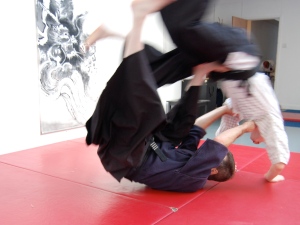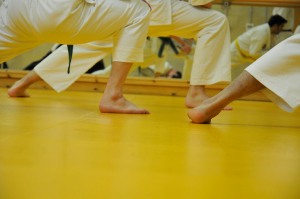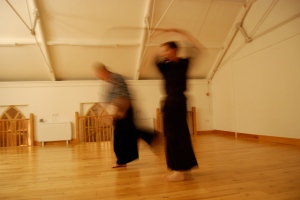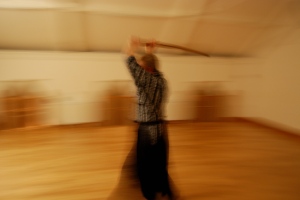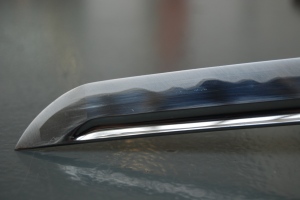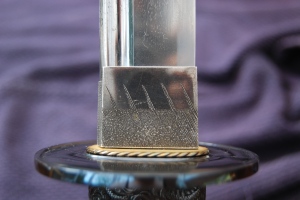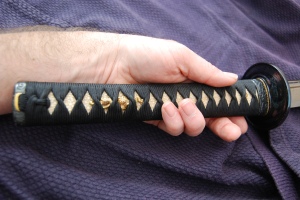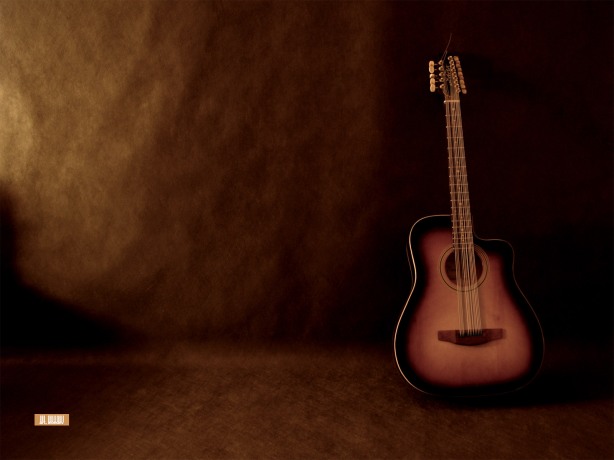It’s always fascinating teaching Aikido, for a subject that people study ostensibly for self-defence, you spend a lot of time on the floor!
But of course the first reason to be able to fall and roll as an Aikido student is for your own safety. Almost any student’s first lesson in Aikido can involve a technique that will have them heading quite quickly towards the mat! On the other hand Karate students may spend the first year of their training without ever having to concern themselves with this problem. Indeed the Karate philosophy in general is to make sure falling is the other guys’ problem! Very important when conditioning students in a combative type style.
Everyone, whether martial artist or non-martial artist, should learn to fall just for their own personal safety. There are many occasions in life (ice or DIY perhaps!) where you can find yourself heading very quickly towards a none to friendly embrace with the hard cold ground! For an ‘aikidoist’ it is the stock and trade of their journey within martial arts.
The system of pure aikido is deflection, flow, and transference of energy through the circular nature of the techniques, the only end to the constant movement of technique is when the opponent hits the floor. So with the necessity for constant practice and repetition of these throws and takedowns everybody involved must become competent at protecting themselves being thrown.
But this is only the first level of appreciation of a break fall technique, as we know in martial arts there are three levels of understanding; first you do, then you know, then you are! We need to practice our falls not just to be safe, but also to understand the throw we hope to execute in greater depth. If you try to throw yourself through the perfect flight path towards the floor, then you begin to feel exactly the points of commitment you must move through, this commitment can easily be reversed in your mind to understanding the instability that an opponent must be guided towards for the throw to work perfectly and hence destabilise your attacker towards the end point…the floor!
So to state the obvious, an aikido student can never learn to understand and love aikido until they learn to love and truly understand being thrown!
Now go to it! 🙂

